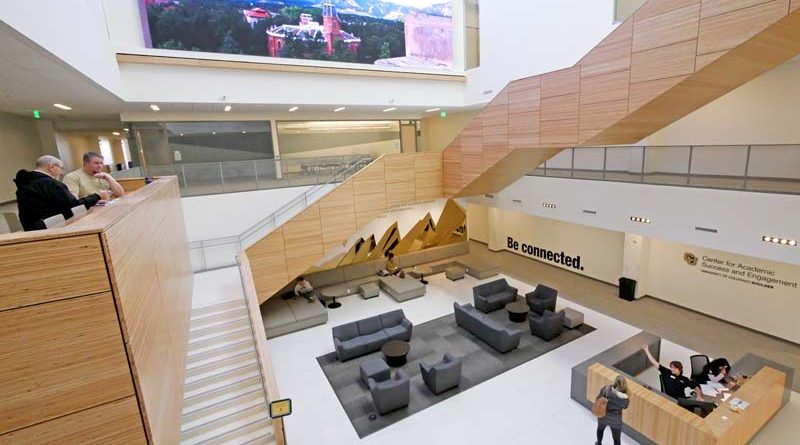CASE Building Notches LEED Gold in Colorado
By Aziza Jackson
BOULDER, Colo. — The Center for Academic Success and Engagement (CASE), which opened in the heart of the University of Colorado Boulder’s main campus last summer, has been awarded LEED Gold status by the U.S. Green Building Council.
The 114,000-square-foot CASE building serves as a new gateway to the campus that supports the academic and student experience from the time prospective students first visit campus through their time at CU Boulder, to graduation and beyond. The latest recognition brings the total number of CU Boulder buildings with LEED certification to 27, either for new construction or major renovations.
“Earning LEED certification for such a prominent building on our campus is exciting as it helps place our commitment to sustainable and efficient building practices front and center in the CU Boulder landscape,” said David Kang, vice chancellor for infrastructure and sustainability.
Noresco provided sustainability consulting services to CU Boulder to ensure that sustainability goals of the CASE project were achieved. Oz Architecture and Bora Architects led design of the building, while GH Phipps Construction Cos., served as general contractor.
Sustainability was woven into systems throughout the CASE building. One of the most prominent features is the electrochromic glass installed at the top-level terraces. The glazing on these south-facing windows self-dims as sun exposure increases, minimizing heat gain and glare while highlighting the breathtaking views of the Flatirons mountains beyond. Also significant was construction of the building atop an existing parking garage, avoiding consumption of green space and actually introducing new sources of vegetation to the site on the north-facing slope.
Other sustainability highlights that bolstered the CASE building’s LEED score include:
• LED lighting throughout that contributes to 32 percent energy savings versus a baseline office and classroom building
• Low-flow plumbing features to conserve water, contributing to a 40 percent reduction in indoor water use versus a baseline office and classroom building
• 67 percent of construction waste diverted from landfills
• HVAC and envelope designed to provide a comfortable thermal environment to promote occupant productivity and well-being

